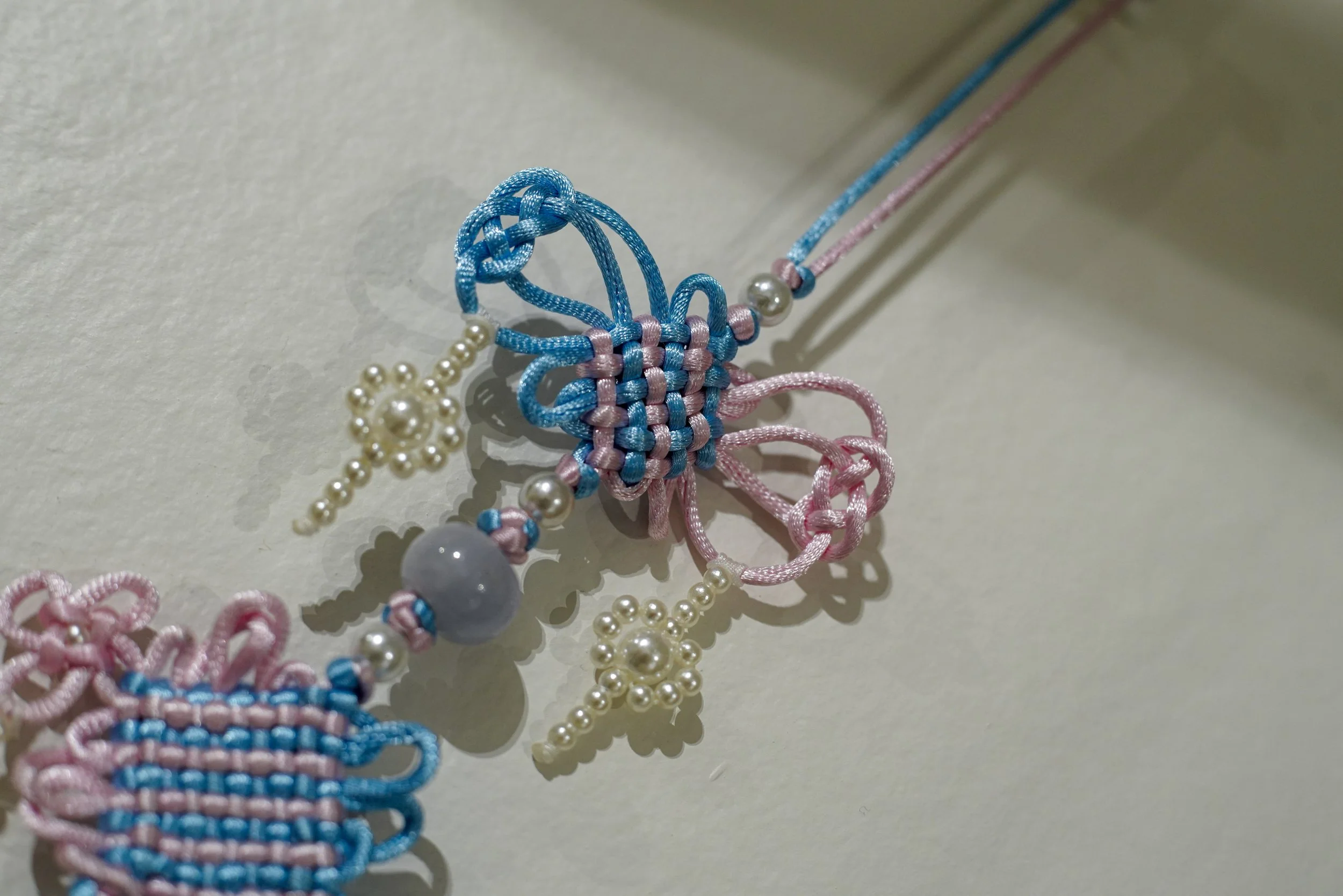
Ashley Khirea Wahba
she/her
Brooklyn, NY, USA
Ashley Khirea Wahba is an Egyptian-American artist, jeweler, and academic based in Brooklyn, NY. She, for some reason, went to art school for both a BFA and MA in jewelry, where she became disillusioned and furious with the art world– especially the world of contemporary jewelry which, at that time, was particularly pretentious, for the rich, lacking in diverse representation, rife with gatekeeping, and always dependent on fake deep wall texts.
Her brand, Khirea Jewels, began as an act of rebellion when she started creating pendants that quickly grew in popularity and notoriety. They functioned as a way of saying fuck you to the traditions of fine jewelry engraving, to the pretentiousness of contemporary jewelry, and to the unethical production of fashion jewelry. She continues to bring this ethos into every piece she creates today.
Outside of the studio she teaches, writes, and lectures, and is unrelentingly disruptive.
“I began this body of work in grad school when a professor declared *my* work should be bigger and more ‘gaudy.’ I laid out pinbacks on a bed of glitter and got to work with hot glue and rage and whatever shiny things were laying around my bench.
I revisited the work this spring using mass produced findings, but since shortly after I’ve had a post-it on my wall that reads ‘Make glitter shitshows valid.’ I would retrofit them to become more acceptable for the Contemporary Art Jewelry™ world, so they could respect glitter and hot glue, as a treat.”
How does your work relate to the theme connection?
“This work connects TRANSGENDER PEOPLE to a LINEAGE.
This LINEAGE is a legacy of Asian gender nonconformity, gods with no gender (藍采和), goddesses who were born as men (观音), our bodies CHANGING and PLASTIC throughout time, either through SOCIAL PERCEPTIONS or PHYSICAL SURGERY.
It connects our SURGERIES to the intricate motions of tying a KNOT.
It connects our FLESH with PLASTIC.
It connects ME to MY ANCESTORS.
It connects our BODIES to CHANGE."
NYCJW24 @ UrbanGlass, Simon Leung
What role does connection play in your creative process?
“My creative process is connected to my ancestors. To the Chinese women who sewed clothes for their families, who worked in laundromats and made quilts for the homeless railroad workers. To the ship hands who learned maritime knots, tying salty bowlines in x̌ʷəlč / the Puget sound. My hands remember their hands, and when I tie a knot the connection to this history is made physical."
What connection(s) does
your
queerness
make
to
the
world
around
you?
"My queerness connects me to:
Friends
Strangers
Flowers
Plastic
Metal
Stone
Knots
Sex
Art
Masculinity
Femininity
History
and Futures."
"跨性别结 AKA 100% Authentic Transgender Knot!!", Plastic cord, artificial pearls, jade, 3" x 16", 2024NYCJW24 @ UrbanGlass, Francely Flores
Anything else you would like to share about this work?
This can be an important part of the process, sourcing materials, or research.
100% Authentic Transgender Knot
~ or ~
跨性别结
Kuà xìngbié jié
“This March, I went to Asia for the first time. I spent a lot of time shopping for materials. I walked down streets with stalls overflowing onto the roads, mopeds weaving between them. I went to multi story malls full of art supplies shining under fluorescent lights.
I was struck by the amount of plastic I saw. Plastic beads, plastic cord, plastic tassels, plastic bags. And it wasn’t limited only to the shops. The temples and shrines I visited were also full of it: grand plastic depictions of Buddha, offerings placed on shiny red plastic trays, and wrapped snacks set at the feet of deities. Seeing all this sent a twinge through me—the growing pit of plastic in the ocean loomed in my mind. But it also forced me to reconsider what I view as “artificial” and “synthetic.”
In America, the phrase made in China has a connotation of cheapness and illegitimacy. If something is made of plastic, it is less authentic than the same object hewn from wood or forged from metal. Similarly, if something was produced recently, it has less cultural weight than the same thing made decades earlier.
Yet as I was in Asia, I realized that many objects that were made from plastic still operated as the “real” thing. People still hung knots made of synthetic cord in their homes to protect them from evil spirits. People still prayed at shrines made of plastic materials. Were these objects less holy because of what they’re made of? Is the magic of prayer rendered null by plastic?
This question of artificiality broadened as I began to tie 跨性别结. This piece is made almost entirely out of plastic materials I bought in Asia—things I purchased from vendors in Hà Nội using broken Vietnamese, or straight from sellers in Shànghǎi.
When I tie a knot, my fingers pinching tiny threads between pins, I sometimes imagine that I’m performing surgery. Over the past five years, I and many of my loved ones have received various surgeries for gender affirming care. Our bodies have been shaped and scarred over. We have skinned our limbs and built new parts. And as public visibility of transgender people in America has increased, so has the derision of our healthcare.
There is a perception that trans people are new, artificial creations. I can’t deny that there is an element of newness to many of our lives. The surgery that I received did not exist 100 years ago. Some of us are imbued with plastic, through the operations that reopen and close our bodies.
The definition of plastic is thus: capable of being shaped or formed. I can think of no better way to describe our transgender bodies, this beautiful thing we’ve been changing for hundreds of years."
NYCJW24 @ UrbanGlass, Francely Flores








